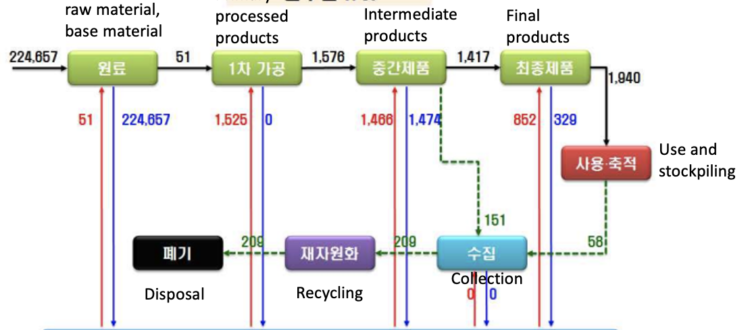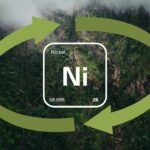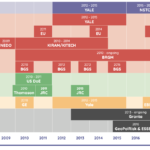Lost in statistics: the case of Korean tellurium
IRTC Coordinator Alessandra Hool and IRTC Board Member Min-Ha Lee share their thoughts on CRM data availability and international cooperation.
It is a well-known problem that data on critical raw materials is often not available, hard to gather, and/or of poor quality. And without data, criticality assessments become challenging, if not impossible. Lacking information about critical materials can make it difficult for stakeholders to plan and respond to changes in demand, supply chain disruptions, and other challenges that could affect material availability.
One example of the special hurdles connected to critical raw materials is that they are often mined as a by-product from other materials. A by-product is a product that is produced because of extracting a primary mineral or ore but is not the economic driver for extraction. Besides a supply that might not adequately react to changing demand, by-produced metals pose another problem: they often do not appear in statistics, since companies and geological surveys frequently only report on the main product mined.
One of the unique features IRTC offers is the exchange across borders. In one of those exchanges, we were talking about tellurium – crucial, for example, for CdTe solar cells that are e.g. produced by FirstSolar – and found out through our network member Min-Ha Lee, Director of KITECH North America: South Korea is actually one of the largest producers of tellurium worldwide, with leading companies such as Korea Zinc (Young Poong Group) and LS-Nikko.
Why is this a fact that even many experts in critical raw materials have never heard about? Tellurium can be a by-product of e.g. gold mining, but is mostly produced at a later stage of the value chain: for example in the electrolytic refining of copper, which frequently takes place in locations other than the mining country. If tellurium-containing copper compounds are extracted from the ground, the tellurium usually does not show up in the mining statistics, for reasons explained above. And when they are exported, it also often do not show up in trade statistics: as in mining, products are often classified according to the trade code of the material that is of main economic value – and subsequently, by-produced metals are often lost in (international) statistics.
South Korea’s specialized companies produce large amounts of tellurium in the refining processes of imported metal compounds. Thus, according to many statistics, Korea sells tellurium to the world out of nothing – without mining or importing it.
IRTC collaborator Nethmi Sewwandi was kind enough to translate [1] a report on Korean selenium and tellurium flows from 2015 provided by Dr. Lee, written by KITECH (Hong-Yoon Kang et al. [2]) which might be of interest for other researchers around the world.
References:
- Translation of [2] by Nethmi Sewwandi, University of Ulsan, December 2022: https://irtc.info/wp-content/uploads/2023/01/Se_Te-Materials-Flow-Report_English-final.pdf
- Material flows of Selenium and Tellurium. Extract from “Establishment of Material Flow Analysis Statistics for Metals” (VI), Hong-Yoon Kang et al., 2015, KITECH (Resource productivity foundation establishment project report funded by Ministry of Trade, Industry and Energy of Korea): https://irtc.info/wp-content/uploads/2023/01/Se_Te-Materials-Flow-Report_Korea-copy.pdf




